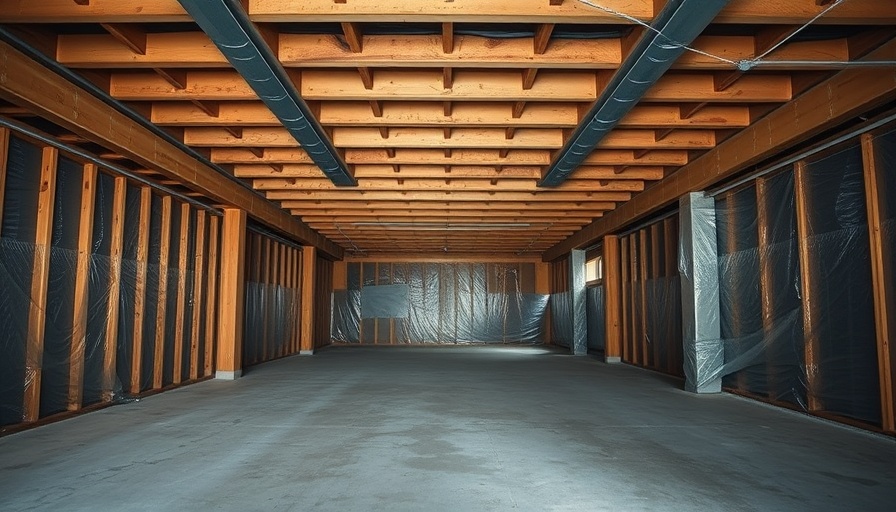
Understanding the Hidden Dangers of Damp Basements
Damp basements are more than just an inconvenience; they can lead to a host of problems ranging from mold growth to structural issues. With rising rainfall and climate change affecting weather patterns, homeowners are becoming increasingly aware of the challenges posed by moisture in their homes.
According to real estate expert Cory Patterson, hydrostatic pressure — which occurs when water builds up in the soil around your home — is a leading cause of dampness in basements. This pressure pushes water through any cracks or openings in the foundation, creating an unwelcome moisture issue. It’s essential for homeowners in areas prone to heavy rains or high water tables to understand that taking preventative measures against hydrostatic pressure involves much more than just patching cracks.
The Role of Drainage in Preventing Basement Dampness
Another culprit behind damp basements is inadequate drainage. When gutters are clogged or improperly installed, and downspouts direct water toward the foundation instead of away from it, you’re inviting trouble. Homebuilders and owners must ensure adequate drainage systems are in place, such as footing drains and sump pumps. Regular maintenance, including clearing gutters and checking the condition of drainage systems, is key to preventing unwanted moisture accumulation.
Improper grading of the surrounding landscape can also exacerbate damp issues, causing rainwater to flow toward the home instead of away from it. It’s like having a moat, but instead of protecting your castle, it floods it. Homeowners should regularly inspect their yards to ensure the soil slopes away from their foundations, which is critical for moisture management.
Recognizing the Signs of a Damp Basement
Learning to identify the signs of dampness early can save homeowners a lot of money and headache in the future. Warning signs include musty odors, peeling paint, and visible water stains on walls and floors. If you notice any of these signs, it’s crucial to take action immediately.
Homeowners should also consider having a professional evaluation of their basements, especially if they’re noticing recurring issues. By being proactive, they can prevent more serious problems down the line that could potentially affect the value of their homes.
Future Trends: Technology and Basement Management
As technology advances, solutions for managing moisture in basements are also evolving. Smart home devices that monitor humidity levels in real time can provide homeowners with immediate alerts to potential issues, allowing for quick preventative action. Similarly, advances in waterproofing materials and techniques offer more effective ways to keep basements dry.
Also gaining traction is the trend of converting basements into livable spaces, which can add significant value to a home in the real estate market. Homeowners looking to take this step must ensure their basements are free of moisture and equipped with proper ventilation to maximize use.
Steps You Can Take Today to Combat Dampness
There are several actionable insights homeowners can implement to tackle dampness. First, check that gutters are clean and functioning correctly. It may be worth investing in extending your downspouts to encourage water away from your foundation. Secondly, inspect your home’s grading and consider landscaping adjustments if needed. Regularly maintain all drainage systems, and monitor indoor humidity levels to ensure they are kept at a comfortable range.
For those who are considering home renovation projects, it’s an opportune time to incorporate moisture management solutions. Only by taking a proactive approach can homeowners keep dampness at bay and protect their properties.
Empowering Homeowners Through Education
Understanding the reasons behind basement dampness empowers homeowners to take decisive action. The growing awareness around these issues is crucial in a volatile real estate market, where the condition of a property can determine its market value. Addressing damp issues not only preserves structural integrity but also keeps homes investment-ready.
In sum, damp basements might seem like minor inconveniences, but they can spiral into major problems if neglected. By educating themselves and taking preventative steps, homeowners not only protect their investments but also create a healthier living environment for their families.
 Add Row
Add Row  Add
Add 



Write A Comment